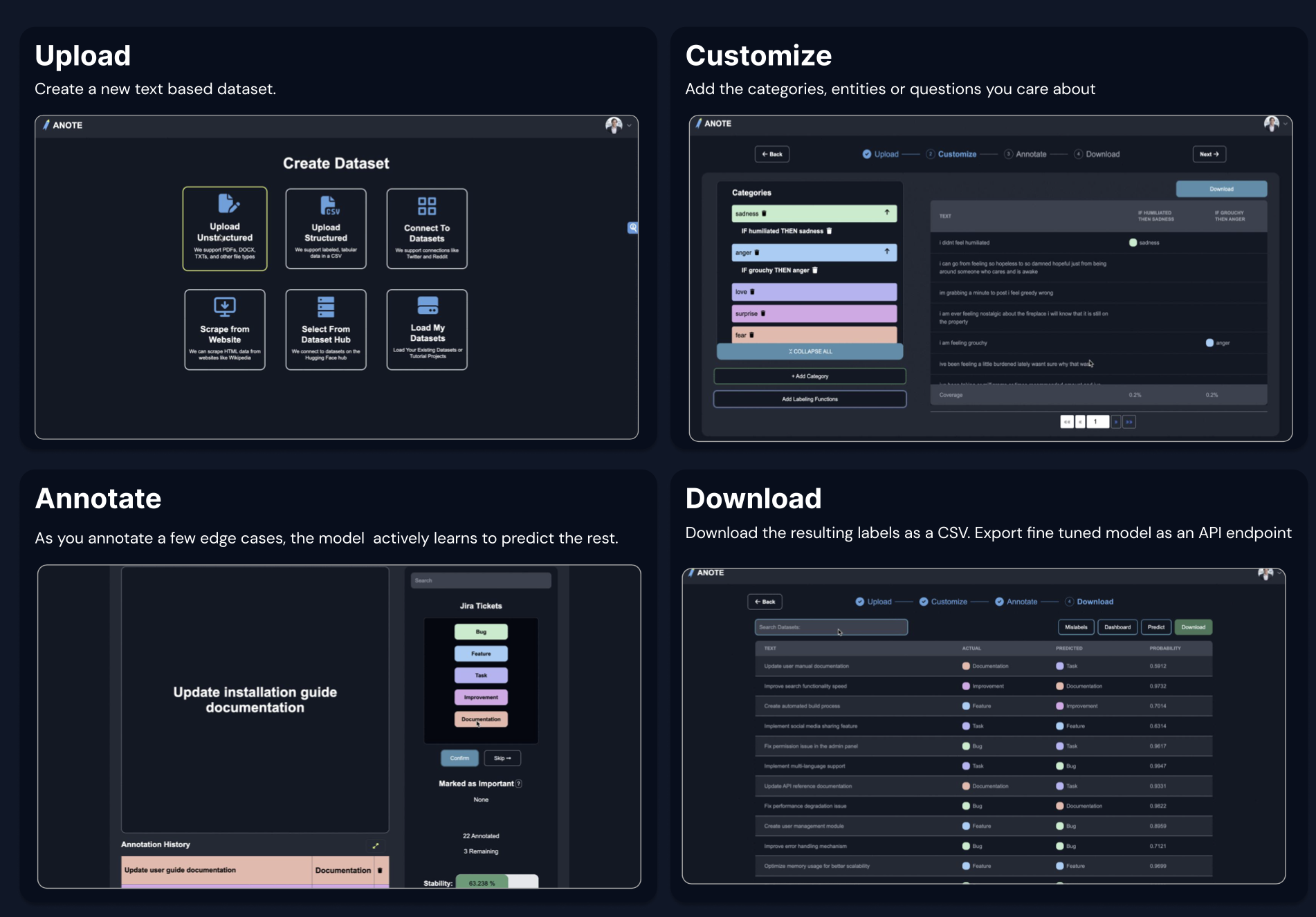Anote
Overview

The Anote platform, pioneered by human centered AI, actively learns from the human feedback of subject matter experts and annotators to make AI algorithms like GPT-4, Bard and Claude and techniques like RLHF, Fine-Tuning and RAG, perform better for specific use cases over time. Over time, we are able to provide more tailored answers to questions, category predictions and entities found because our platform enables AI models to actively learn and rapidly improve from the knowledge of domain specific subject matter experts.
On the Anote platform, users can upload unstructured data like PDFs, TXTs, DOCXs, PPTXs, scrape HTML files from websites, or upload structured data like CSVs. Users can connect to any dataset on the hugging face dataset hub, or integrate with external data sources like Reddit, S3, Notion, Asana, Github, Snowflake, Twitter. After the user customizes their requirements (adding the questions, categories or entities they care about), the AI model is able to actively learn from people with just a few interventions to improve model performance (think hundreds of rows labeled, rather than millions required for re-training LLMs). Users can download the resulting CSV of actual and predicted results, as well as export the updated AI model to make real-time, improved model inference and predictions via the call of an API.

Anote Impact
The core idea behind the Anote platform is that as a user, after you label a few data points, we label the rest. This saves you time and money, while providing you high quality, accurate labeled training data to enable the successful completion of AI projects. Via converting raw unstructured text data to structured data, Anote can be used to better:
-
Classify text data into taxonomies of hundreds of categories
-
Extract domain specific entities from unstructured text data
-
Answer specific questions and summarize long documents